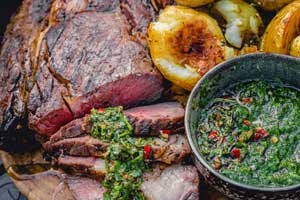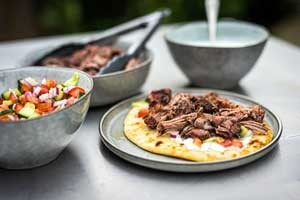Have you ever removed your meat from the heat at the perfect temperature, only to find it looks overdone once you...
Beginner’s Guide to Wild Outdoor Cooking with The Salt Box
Wild cooking is a fantastic opportunity to cook delicious, sustainable foods using natural methods, all while connecting to nature. We wanted to learn more about this way of enjoying food, so we went to visit The Salt Box, a woodland cookery school nestled in the heart of the Surrey countryside. Beckie and Christian, who founded the school in 2017, gave us an incredible overview of the basics of everything they do, from setting up different styles of fires to foraging for accompaniments to their incredible dishes.
Check out our Instagram to watch our video series capturing our day there, or read on to find out Beckie and Christian's tips and tricks on how to set up a traditional fire, forage and cook wild food in the woods.

What are your favourite fire cookery techniques?
Planked fish asado style, using indirect heat. We layer lots of wild and homegrown herbs onto a cedar plank and scatter it liberally with our beetroot, horseradish and caraway seasoning. The plank is then nestled in front of the fire and allowed to roast until just cooked through to anywhere between 55 and 60 °C. The plank also acts as the platter for the fish, just remove the nails and take it straight to the table.
We also love coal-baked vegetables, where you place the veg directly onto the coals. Coal-baked beets served with wild garlic labneh are a favourite of ours.
Top tips for cooking with fire?
Temperature, not time
Always cook to temperature and not time. Every fire, bbq, oven or even hob’s output will be different and affected by the elements. Always take time with a pinch of salt and trust your Thermapen.
Quality fuel
In an open fire pit, we use a mix of the best charcoal and wood you can lay your hands on for the best heat and flavour output. The charcoal will become the heart or engine room of the fire, and the wood will add smoke, flavour and flame for a little extra heat for skillets and pots.
Relax
Always try to cook in a relaxed manner using larger cuts to your advantage. No one really wants to be juggling burgers, sausages and chicken drumsticks. Larger joints cooking indirectly can give you the breathing space to kick back and relax with friends and family.
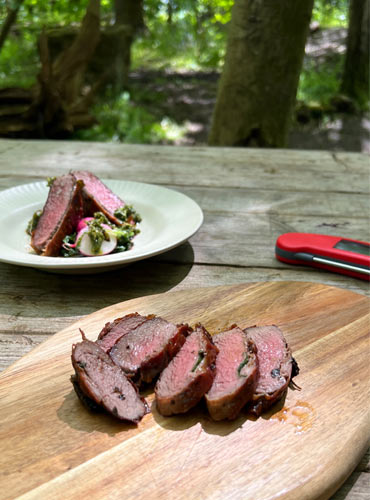
Must-have tools for cooking outdoors over a traditional fire?
Fire rake and blower
For moving embers and introducing oxygen to fuel the fire when needed. The length of the blow poker lets you keep your face away from the heat.
Fire gloves
Allows you to easily move hot pans and grill racks around safely whilst maintaining a secure grip.
Flat metal skewers
The metal conducts heat through the meat, and the shape allows you to turn your skewers without your meat or vegetables spinning. Use them for cooking rows of chicken wings, bacon rashers or even for grilling strawberries.
Thermapen
For spot-checking core temps throughout cooking.
What’s your favourite wild game meat to cook?
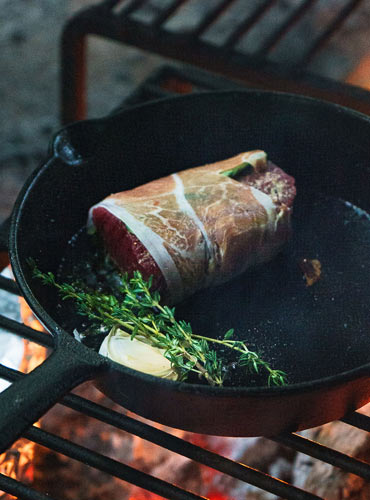
I think pigeon breast has to be our favourite game meat to cook. Available all year round, its robustness stands up to so many different flavours. We love to turn the breasts into a saltimbocca, brushing the breast with Dijon mustard and a smattering of ground ivy leaves instead of sage. All wrapped up in a layer of prosciutto before being pan-fried in butter and herbs until it reaches 55 °C. It goes perfectly with a wild herb salsa verde.
Best lesser-known cuts of meat to try?
Lamb breast
Much more forgiving for anyone starting out in their bbq journey, great for low and slow but done in a fraction of the time.
Fallow neck fillet
Perfect for quick grilling when cut into medallions and skewered - cook medium to a core temperature of 50 °C and rest well. Or, hot smoke it to a core temp of 80-85 °C for shreddable meat. For curries and stews, cook diced.
Bavette or skirt steak
This is a great alternative to expensive sirloin or ribeye steaks. For us, it’s the perfect balance of flavour and fat. Cook quickly in a skillet or direct grill, cook pink and rest well!
Rabbit shoulders
These are generally just thrown into stock. We like to save them up in the freezer and give them a light cure in salt before slowly cooking them in duck fat. They then get roasted hard in our Big Green Egg before being tossed in buffalo sauce. A great twist on buffalo chicken wings.
Any foraging tips for beginners?
Start simple
As a beginner, it’s best to start looking for easily recognisable types of wild foods to help you gain confidence. Nettles are one of nature’s finest superfoods, easily identifiable and incredibly abundant!
If in doubt, leave it out
Take time to ensure you safely identify your finds - there are so many great books, online resources and apps to choose from. If you’re not able to identify a plant with complete confidence, don’t pick it.
Stay local
Foraging is about recognising the abundance that is around us all the time, with plenty available at the bottom of our gardens or in our local parks.
Enjoy the process
Foraging is about recognising the abundance that is around us all the time, with plenty available at the bottom of our gardens or in our local parks.
The 10% rule
Take no more than you plan to consume, leaving plenty so the plant continues to thrive and for our local wildlife. We want to enjoy our ecosystem - not damage it.
Visit The Salt Box website to explore their range of woodland cookery classes and wild experiences.
Related posts
 Roast topside of beef with Yorkshire puddings
Roast topside of beef with Yorkshire puddings
 How to Cook Beef Ribs with the Smokin' Elk
How to Cook Beef Ribs with the Smokin' Elk
 How to Use a Meat Thermometer Accurately
How to Use a Meat Thermometer Accurately
 The Smokin' Elk's BBQ Turkey Crown with Roasties
The Smokin' Elk's BBQ Turkey Crown with Roasties
 Kenny Tutt's Roast Partridge with Creamy Smoked Bacon Cabbage
Kenny Tutt's Roast Partridge with Creamy Smoked Bacon Cabbage
Search
Categories
- Baking (34)
- BBQ (81)
- Autumn (14)
- Cheap Eats (9)
- Sweet Treats (38)
- Tips, Advice & Info (77)
- Christmas (35)
- Drinks (1)
- Thermapen Father's Day Recipes (17)
- Team Temperature (23)
- Date Night (37)
- Celebrations (20)
- Family & Kids (9)
- Fish (21)
- Low & Slow (11)
- Meat (138) click
-
Chefs (128)
click
- Kenny Tutt (16)
- Richard Holden (16)
- Barbechoo (5)
- Only Slaggin (1)
- SoSaSe Chocolat (1)
- Genevieve Taylor (5)
- Becky Excell (2)
- Charlotte Stirling-Reed (3)
- The Smokin Elk (12)
- Marcus Bawdon (2)
- Thermapen Chef (25)
- Edd Kimber (2)
- Humble Plates (7)
- Simon May (4)
- The Hedgecombers (3)
- Billy & Jack (4)
- Perfectly Preserved (3)
- Mike Tomkins (19)
- DJ BBQ (2)
- Nick Nairn (4)
- Air Fryer (9)
- RFX (3)
Latest recipes

There’s nothing like tender smoked pork belly piled into soft tacos, especially when topped with tart homemade...
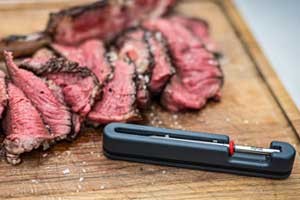
Reverse-seared tomahawk steak cooked on the BBQ. Served with a rich and flavourful cowboy butter sauce.
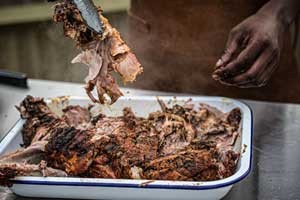
Smoky, tender pulled pork cooked on the BBQ. Served in soft tacos with homemade salsa and spicy mayo.
Archive
Popular Recipes
